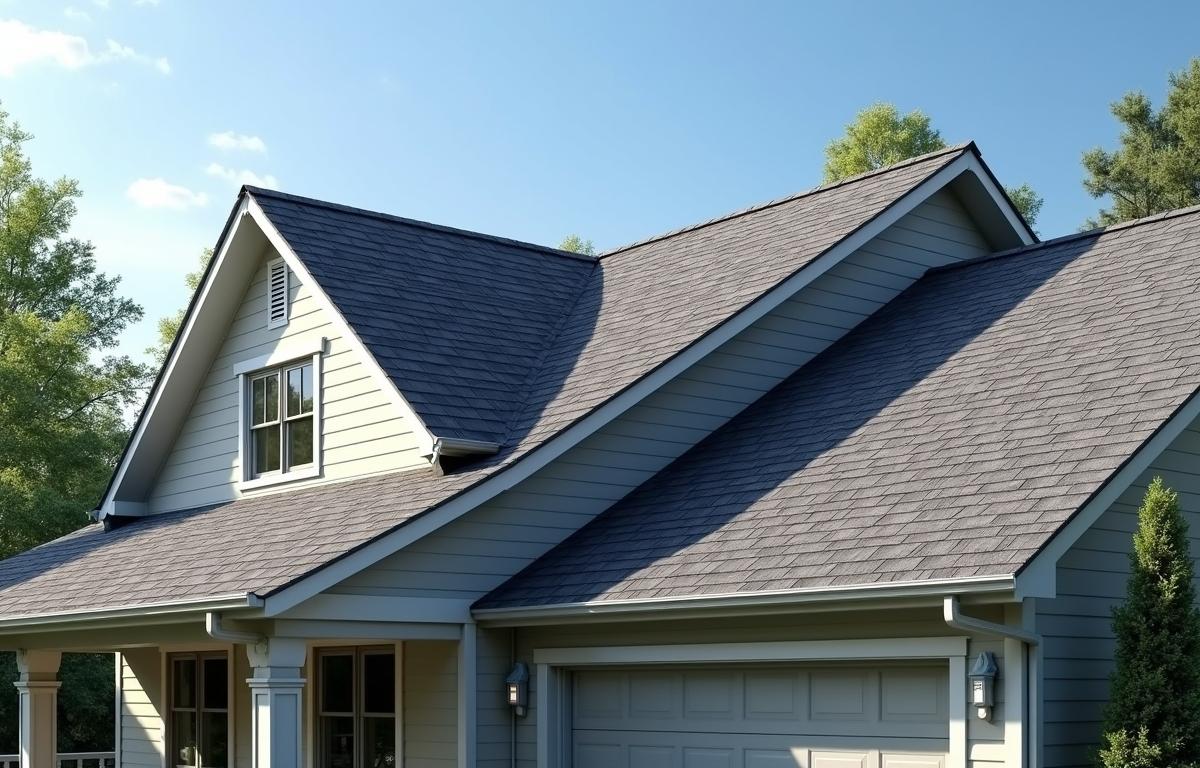Designing a roof can often feel like a daunting task, given the multitude of options and considerations that may influence the outcome. With various styles, materials, and technological advancements available, making informed decisions is crucial to ensure lasting results.
Each design feature contributes to aesthetics and to the practicality and functionality of the roof. Proper planning and strategic choices can significantly reduce maintenance requirements and the need for regular repairs, ultimately leading to time-saving benefits for homeowners.
Choosing the Right Materials
The materials selected for roofing play a major role in performance and longevity. Common materials include asphalt shingles, metal, tile, and wood. Asphalt shingles are among the most frequently used due to their affordability and ease of installation.
Metal roofing, while often more expensive, offers superior durability and requires less maintenance. Tile roofs are popular in areas prone to frequent weather changes, as they can withstand extreme conditions.
Investing in high-quality materials might come with a higher upfront cost, but it can save you time and money in the long run by reducing the frequency of repairs. Taking time to read more about how long it takes to install a roof or how different materials perform will help you make an informed choice that aligns with your specific needs. Incorporating sustainable materials is another trend that many homeowners are considering, not just for environmental benefits but for long-term durability.
Think about the architectural style of your home when choosing roofing materials, as not all options will complement every design. Climate should guide your selection; certain materials perform better in specific weather conditions. Wood may not be ideal in humid regions where moisture can lead to rot.
Effective Drainage Systems
Rainwater management is critical for the integrity of a roof structure. A well-designed drainage system effectively channels water off the roof, preventing ponding and potential leaks. Installing gutters with adequate slope and sized to handle the rainfall of the region will minimize water accumulation. Incorporating downspouts at strategic locations can significantly enhance the system’s efficiency.
Proper drainage protects the roof and prolongs its lifecycle. Take into account innovative drainage solutions such as green roofs or rainwater harvesting systems to optimize efficiency. These systems can help divert water and support sustainable practices while allowing for potential savings in utility costs.
Proper Insulation and Ventilation
Insulation and ventilation are critical features that impact a roof’s performance. A well-insulated roof will help regulate indoor temperatures, reducing heating and cooling costs. This helps to ensure energy efficiency while enhancing comfort levels within the home space.
Beyond attic and ceiling insulation, rooftop penetrations and access points are often overlooked sources of heat loss and air leakage; incorporating insulated access solutions can meaningfully reduce thermal bridging while maintaining safe rooftop entry for maintenance. Upgrading or specifying insulated roof hatches during the design phase preserves continuous insulation and lowers heating and cooling loads over the building’s life. For projects where rooftop equipment requires frequent servicing or emergency egress is needed, architects and contractors can purchase insulated roof hatches that meet NBS and ISO standards for durability and thermal performance. Including these elements alongside roof insulation and ventilation creates a more holistic, energy-efficient roofing system.
Smart Roofing Solutions
Smart roofing solutions have become increasingly popular for their ability to enhance functionality. Systems equipped with sensors can monitor weather conditions and alert homeowners to potential issues, such as excess moisture or temperature fluctuations. These advancements provide real-time data and automate certain processes, such as adjusting ventilation or activating heating cables during snowy conditions.
Smart roofing can save time on regular inspections and allow for prompt attention to potential concerns before they escalate into costly repairs. Investing in such technology represents a step forward in maintaining high performance and longevity in roof design.
Aesthetics vs. Functionality
While aesthetics are important in roofing design, ensuring functionality should always come first. Working with a professional can help you strike the right balance between style and performance. Choosing materials and designs that naturally complement the architectural style of the home will enhance visual appeal and add to the structural integrity.
An architect or a roofing expert can provide invaluable advice on how to achieve this balance. Roofs with unique designs can sometimes experience issues like increased wind resistance or structural strain; thus, planning according to the specific environment and style could prevent future complications.
Regular Maintenance Checks
Investing in a roof doesn’t stop at installation. Regular maintenance checks play an integral part in prolonging its lifespan and minimizing repairs. Scheduling inspections at least once every year and after severe weather events can catch minor issues before they lead to significant damage. This proactive approach can save homeowners time and expense in the long run.
Maintenance tasks such as cleaning gutters, checking for loose shingles, and inspecting sealants around flashings are simple yet necessary. By prioritizing these upkeep tasks, homeowners can ensure their roofs remain in optimal condition and effectively resist the elements.
By considering these design features and investing time in proper planning and execution, homeowners can create a roof that looks beautiful and stands the test of time. The key to a successful roofing project lies in a thoughtful approach that values material quality, functionality, and regular care.
